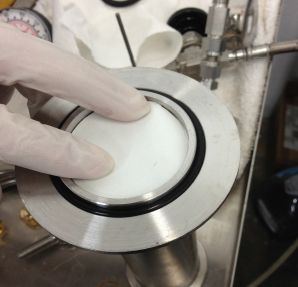Questions to Ask When Choosing the Perfect Polymeric Flat Sheet Membrane

Let’s say you’re an application engineer in the textile industry, and you’re tasked with finding the right technology to separate dye from wastewater. There are specific questions you need to ask to guide you into making the best choice possible.
Question 1: How fine is your application?
Membrane selection starts by first narrowing down the filtration categories you could work with including pressure-driven, osmotically-driven, and temperature-driven.
- Pressure-driven filtration categories are further subdivided into four: microfiltration, ultrafiltration, nanofiltration, and reverse osmosis.
- The osmotically-driven membrane separation process is also known as forward osmosis.
- And another separation technique is partial vapor pressure difference induced by a temperature difference or temperature-driven filtration.
Question 2: What are your membrane selection criteria?
Once you’ve narrowed down your filtration category, it’s important to evaluate selection criteria based on your application, and determine which is most vital to the success of your work.
- Chemical compatibility with the feed solution. You want to be confident that the membrane material you choose is compatible with your solution and doesn’t change characteristics over time.
- Membrane pore size. Pore size dictates how the selection or suppression process works. Larger pore sizes allow larger particles to pass, while smaller pore sizes are more selective about what passes through.
- Membrane flux. It is also essential to find out which will produce the most flux or the permeate rate per unit area of membrane. The flux is a function of applied pressure, water temperature, and in the case of NF, RO, and some UF, the osmotic pressure of the solution under treatment. Other factors to consider when choosing your membrane material and characteristics are: temperature limits, pH limits, affinity for water (hydrophilic or hydrophobic), and membrane surface charges.
Question 3: What membranes are ideal for a particular application?
Many manufacturers have optimized particular membranes for specific applications. If you’re still unsure of which membrane to use after establishing your selection criteria, you can also review the typical applications for a membrane. From our original example, if you are separating dye from dying wastewater effluent, our application engineers recommend either polyamide-TFN composite and F membranes or ultrafiltration membranes with very low pore size. Nanofiltration membranes are recommended if the dye is very water-soluble (and thus, small particle sizes). If you want the fastest path to your solution, give us a call, and one of our application engineers will get you there.
Additional Sources:
- Most Viewed Blog Articles (5)
- Company News (285)
- Emerging Technologies (64)
- Microbiology and Life Science News (93)
- Water and Fluid Separation News (97)
- Filtration Resources (93)
- Product News (19)


![Join Sterlitech at BIO 2024 [Booth #5558]: Exploring the Future of Biotechnology](https://www.sterlitech.com/media/blog/cache/300x200/magefan_blog/b4.jpeg)



